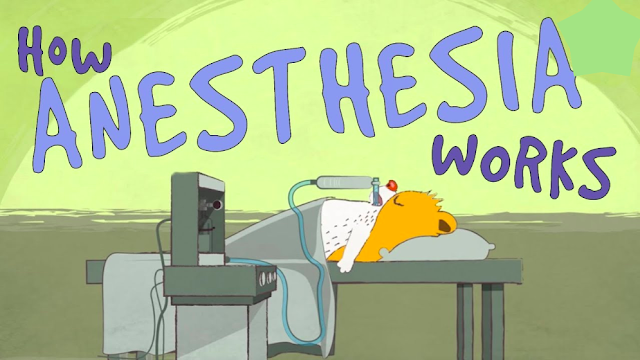Anesthesia
If you’ve ever undergone surgery, you might recall starting to count backwards from ten, nine, and eight before realising that it was already five when you woke up. Even if it appeared like you were asleep, you weren’t. The fact that you were unconscious makes things considerably more difficult. Although you were unconscious, you were unable to move, remember anything, or, hopefully, experience pain. Many surgeries would be far too traumatic to do if we couldn’t stop all those processes at once.
Early anaesthetics containing ingredients like opium poppies, mandrake fruit, and alcohol are all mentioned in ancient medical literature from Egypt, Asia, and the Middle East. To achieve the ideal balance for a surgery, anaesthesiologists today frequently blend regional, inhalation, and intravenous drugs. Regional anaesthetic prevents the brain from receiving pain signals from a particular body part.
Electrical impulses from pain and other signals pass through the neurological system. The way regional anaesthetics operate is by erecting an electrical barrier. They bind to proteins in the cell membranes of neurons that enable negatively and positively charged particles pass through and lock out neutrally charged particles. Cocaine is one substance that achieves this; its painkilling properties were unintentionally discovered when an ophthalmology intern got some on his tongue. Although several of the more popular regional anaesthetics share a similar chemical composition and function, it is nevertheless occasionally employed as an anaesthetic. But if you need to be unconscious for major surgery, you’ll need something that affects the entire neurological system, including the brain.
Inhalation anesthetics work in this manner. Diethyl ether was the first common one used in Western medicine. Prior to doctors realising that people occasionally didn’t notice injuries they got while under the influence, it was primarily known as a recreational drug. They began using ether to sedate patients during surgeries and tooth extractions in the 1840s. In the years that followed, nitrous oxide gained acceptance and is still employed today. Sevoflurane and other ether derivatives, however, are more widely used. Intravenous anaesthesia, which was created in the 1870s, is typically used in addition to inhalation anesthetic.
Sedatives like propofol, which cause unconsciousness, and opioids like fentanyl, which lessen pain, are common intravenous medications. These general anaesthetics also appear to function by interfering with nervous system electrical signals. As many brain regions communicate with one another, the electrical impulses produced by the brain are typically a chaotic chorus. You remain alert and awake thanks to that connectivity. However, those signals grow calmer and more ordered as a person is sedated, indicating that distinct brain regions aren’t communicating with one another any longer. We still don’t fully understand the specifics of how this occurs. The GABA-A receptor in the brain’s neurons is bound by a number of commonly used anaesthetics. They keep the cell’s entryway open, allowing negatively charged particles to enter. A buildup of negative charge prevents the neuron from delivering electrical messages by acting like a log jam. These gated channels are abundant in the neurological system and regulate pathways for movement, memory, and consciousness.
The majority of anesthetics presumably have several effects and don’t merely affect the neurological system. Numerous anaesthetics also have an impact on the heart, lungs, and other important organs. Modern medications can have dangerous adverse effects, just like early anesthetics, which contained well-known poisons like hemlock and aconite. As a result, an anaesthesiologist must carefully monitor the patient’s vital signs and change the drug mixture as necessary in order to mix the exact proper balance of medications to produce all the characteristics of anaesthesia.
Understanding how to administer anesthesia, despite its complexity, has enabled the advancement of new and more effective surgical methods. Among other life-saving procedures, surgeons could learn how to routinely and safely execute C-sections, unblock arteries, replace diseased livers and kidneys, and perform many other surgeries. Additionally, more and more patients will survive the trauma of surgery thanks to the development of new anaesthetic procedures each year.
Related Searches:
how does anesthesia work wikipedia, how do they wake you up from anesthesia, how does anesthesia work in the brain, how does anesthesia work during surgery, how does anesthesia work chemically, how does general anesthesia work, how does anesthesia work in the nervous system, how does anesthesia work reddit.
List of Tags:
anesthesia, general anesthesia, local anesthesia, anesthesiology, going under, surgery, how does anesthesia work, how anesthesia works, anesthesia, anesthesia awareness, anesthesia deutsch, anesthesia doctor, anesthesia injection, anesthesia meaning, anesthesia medicine, anesthesia pronunciation, anesthesia side effects, anesthesia tarkov, anesthesiologist, crna, general anesthesia, local anesthesia, epidural anesthesia, spinal anesthesia, types of anesthesia, mac anesthesia, regional anesthesia.




